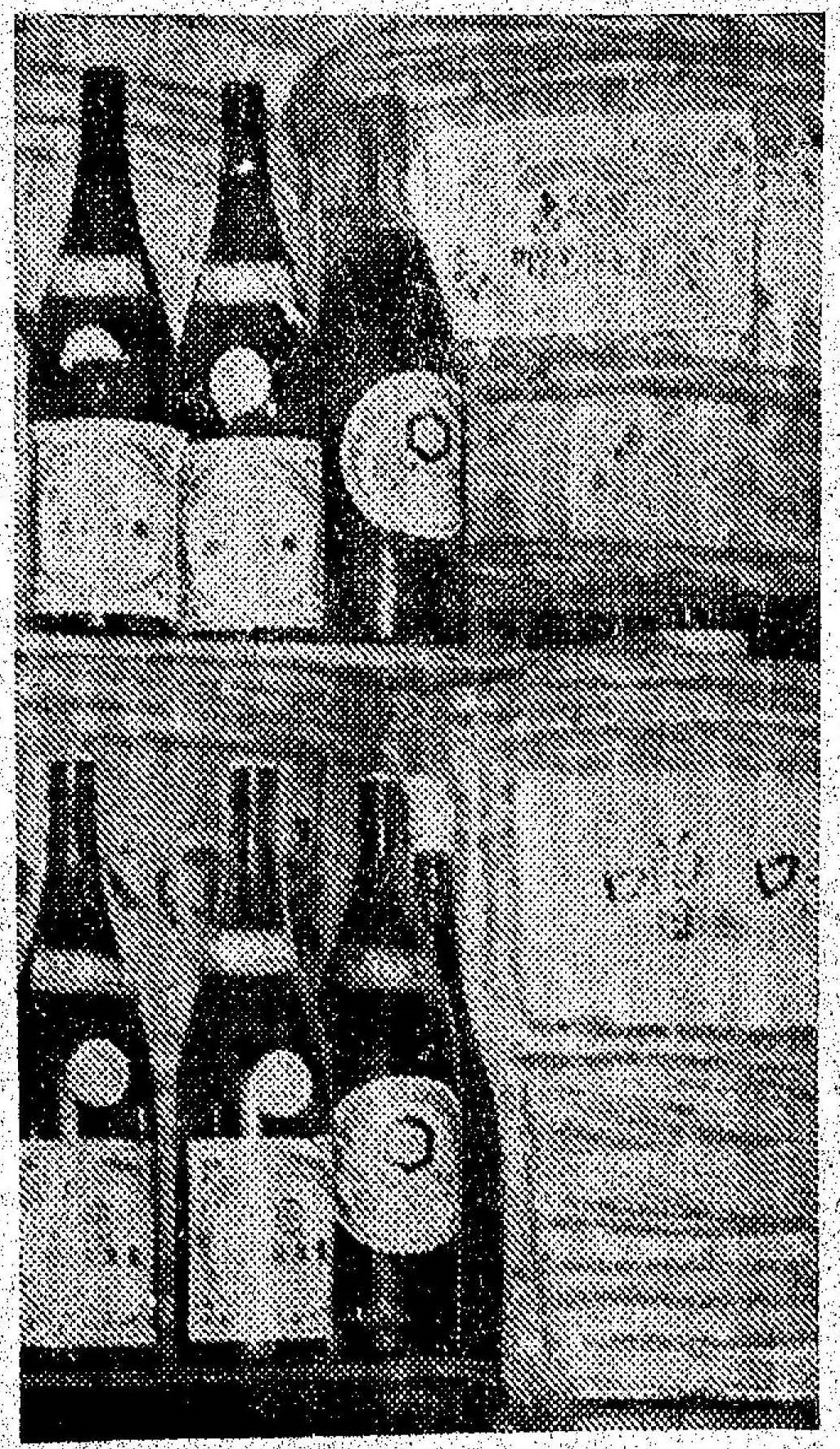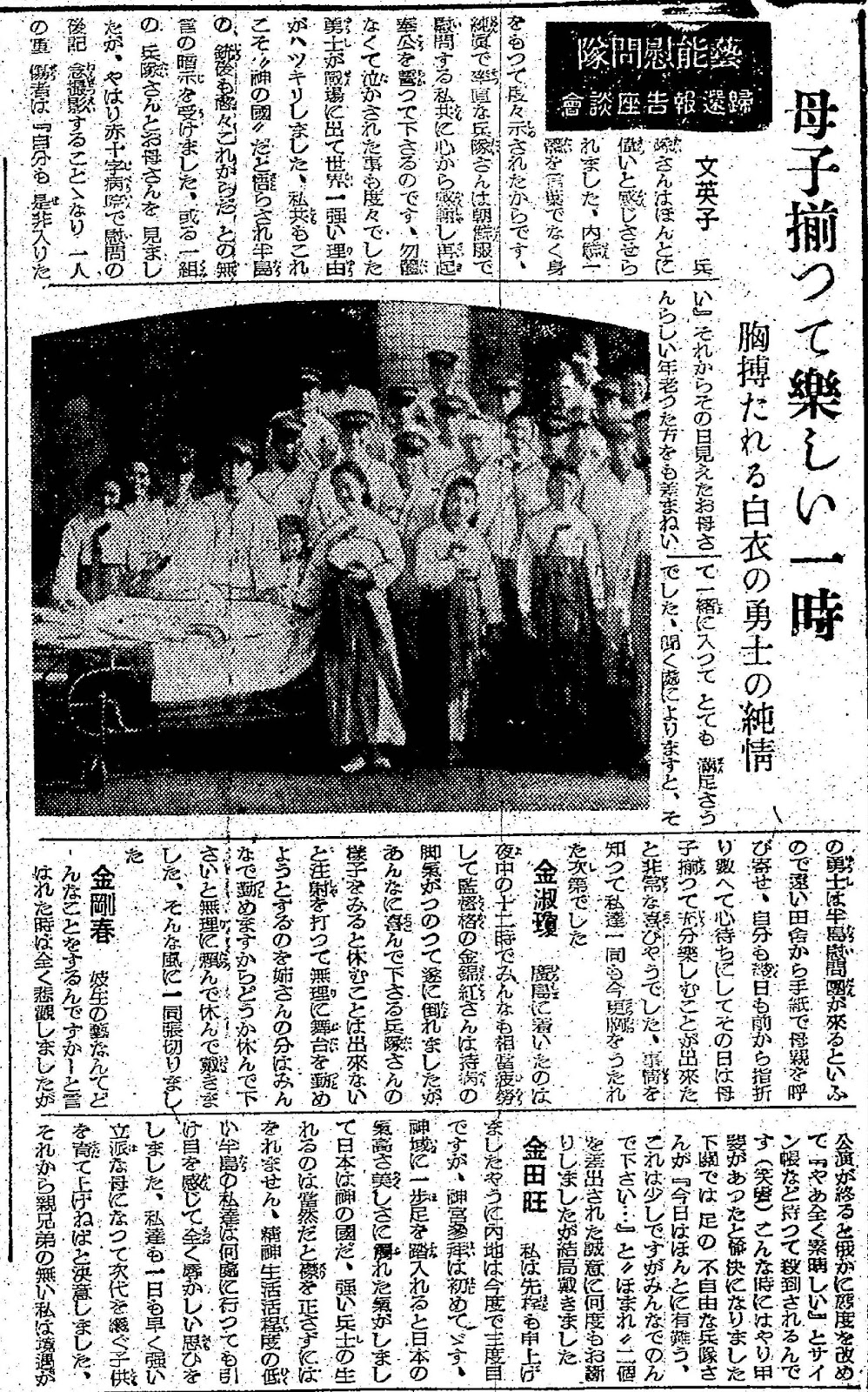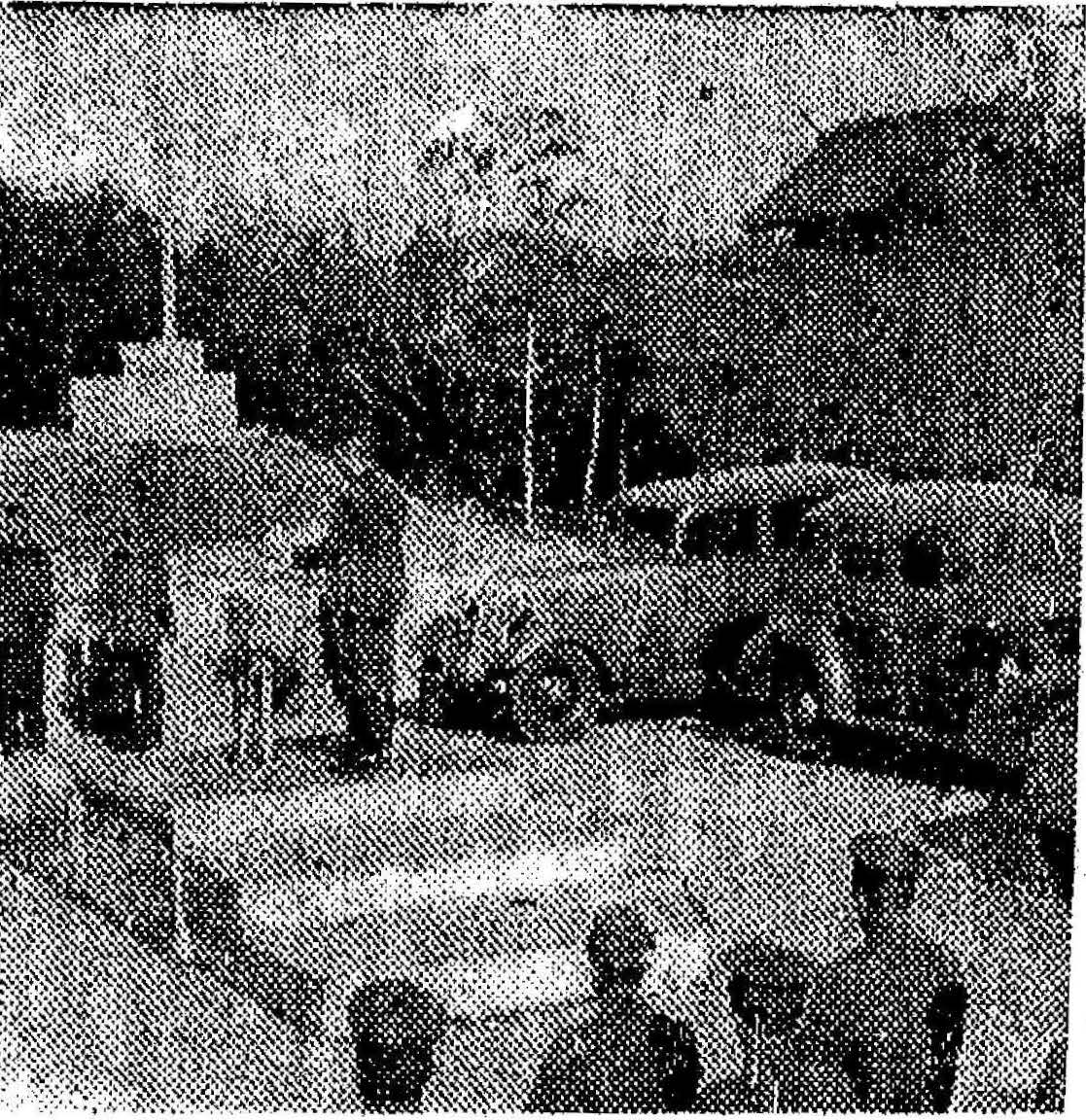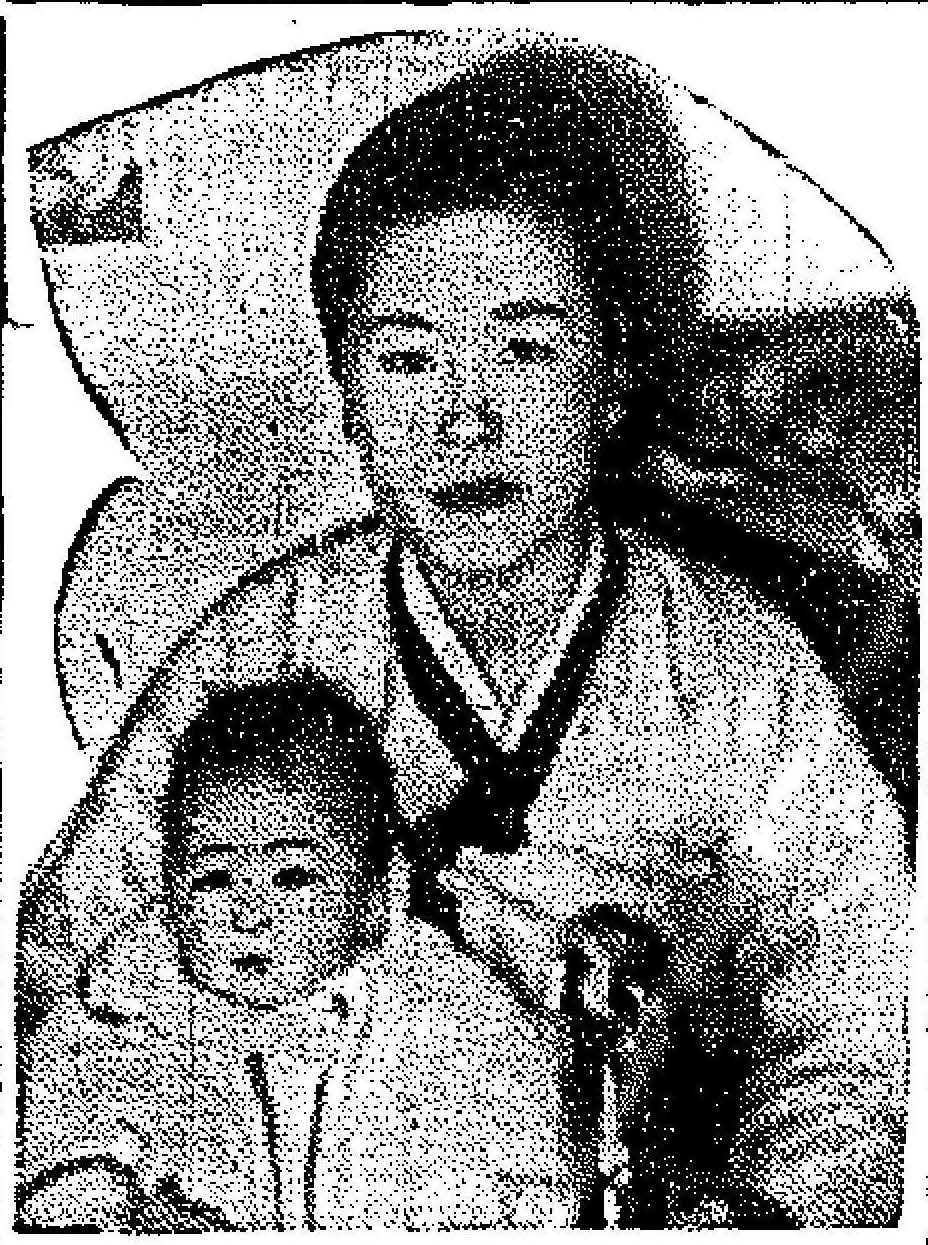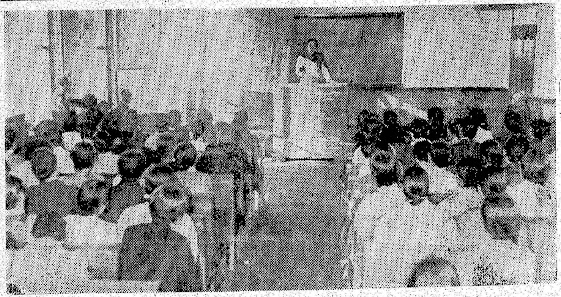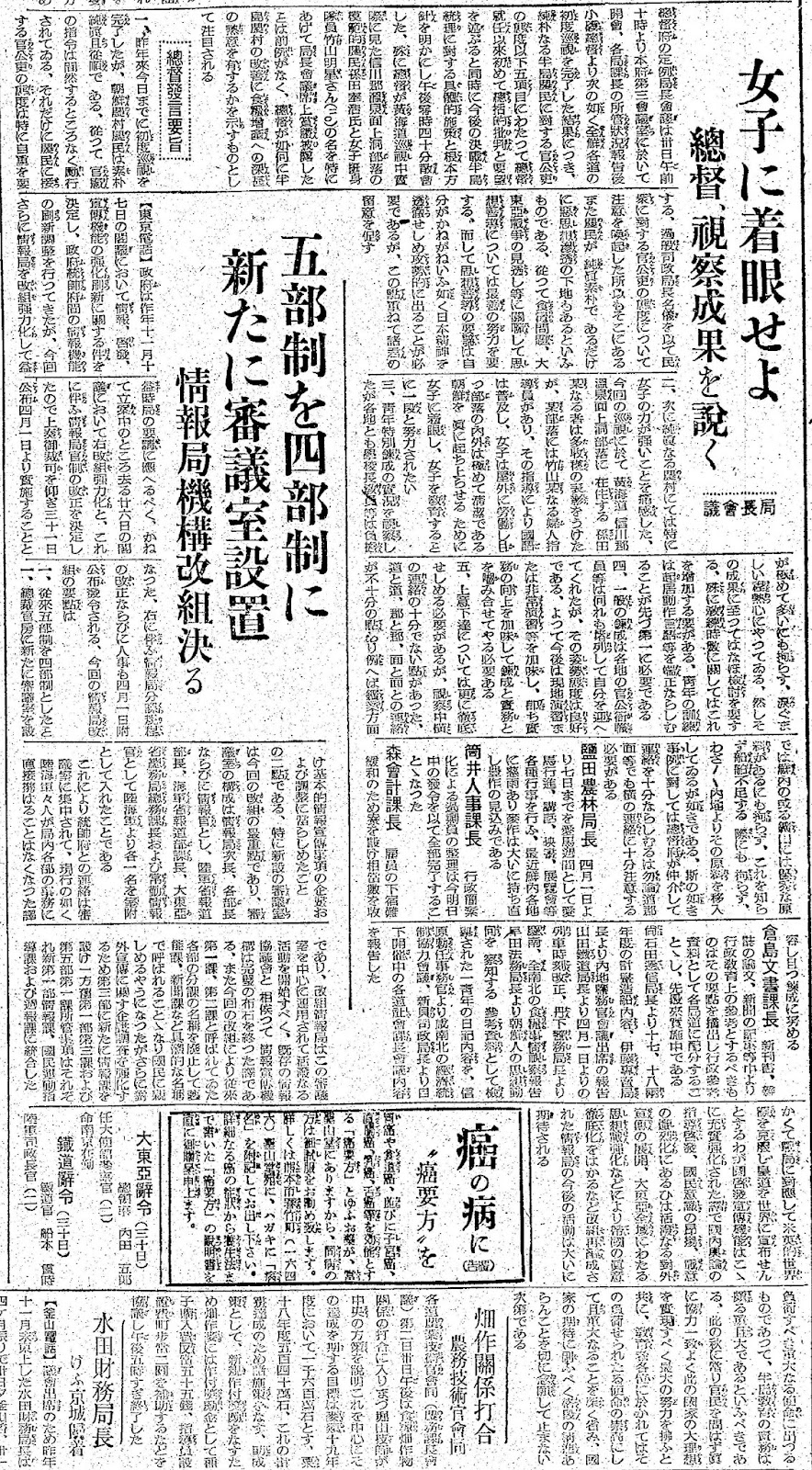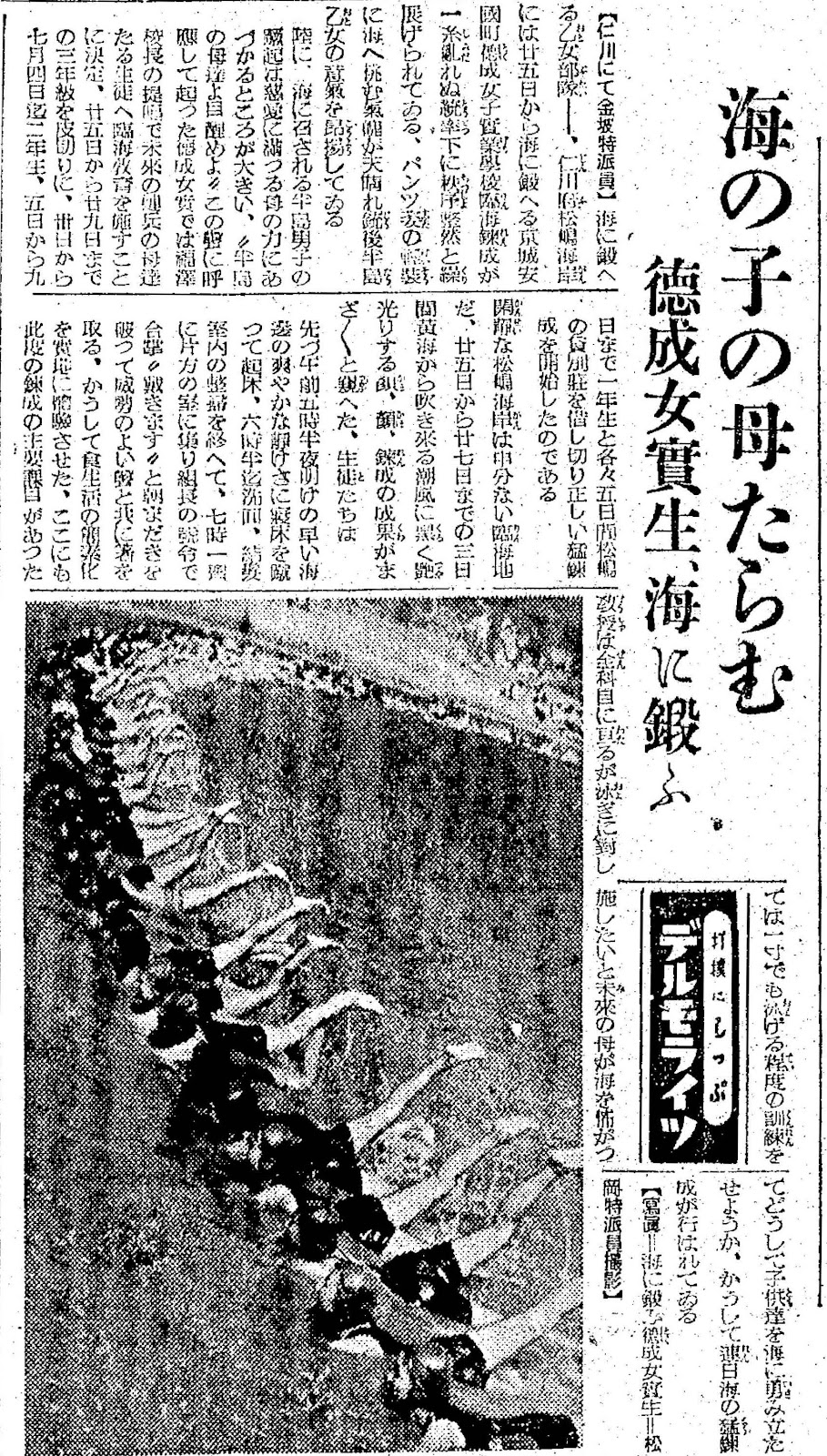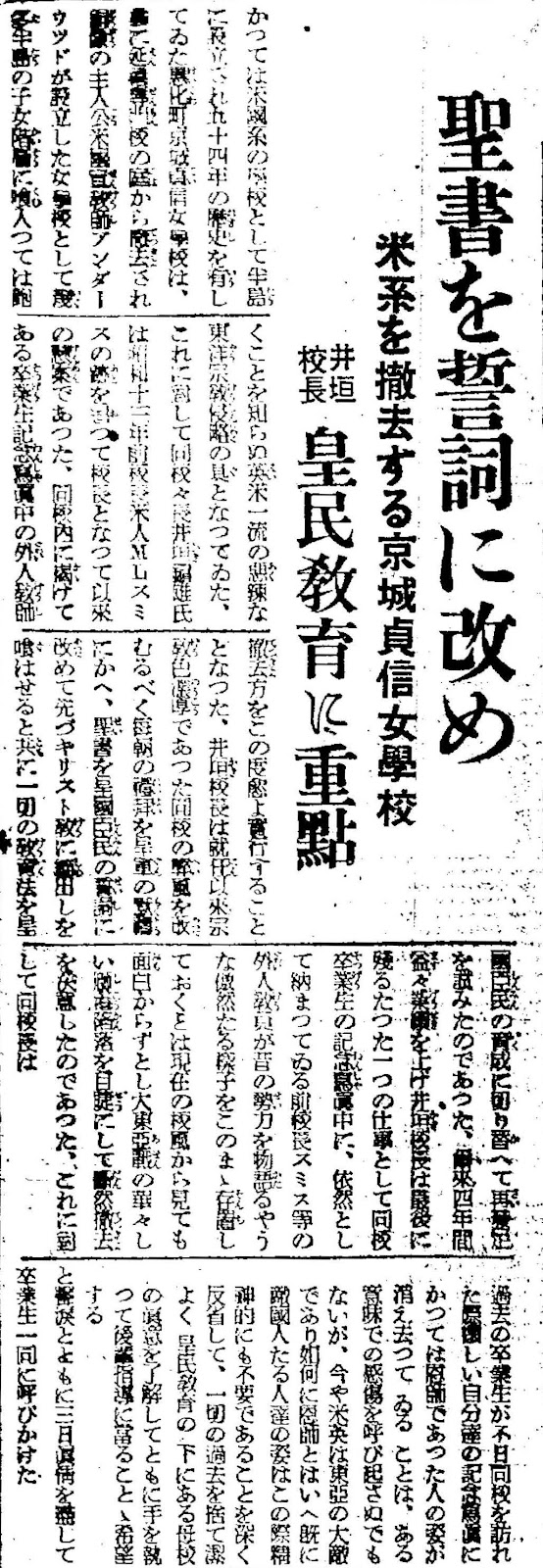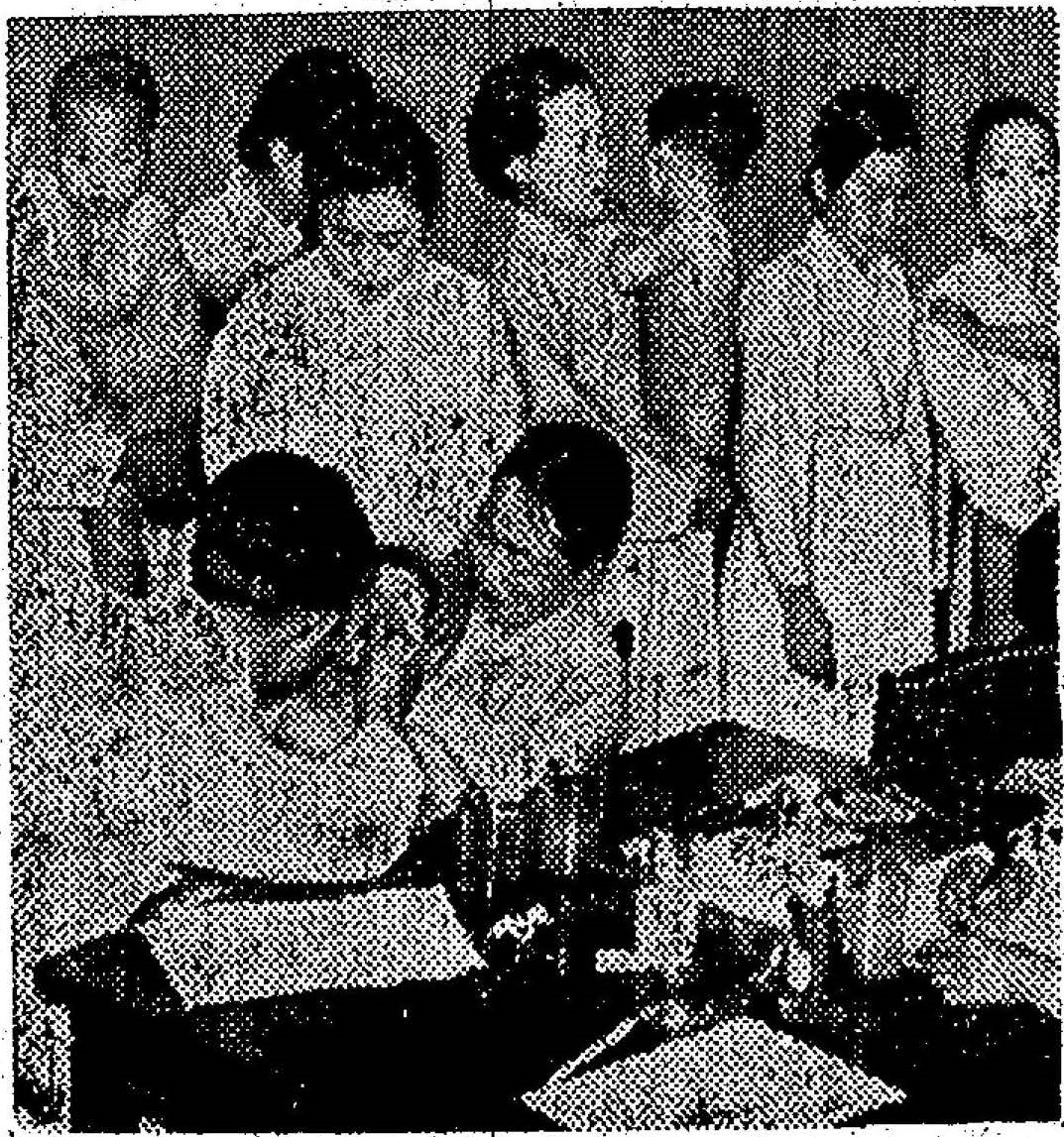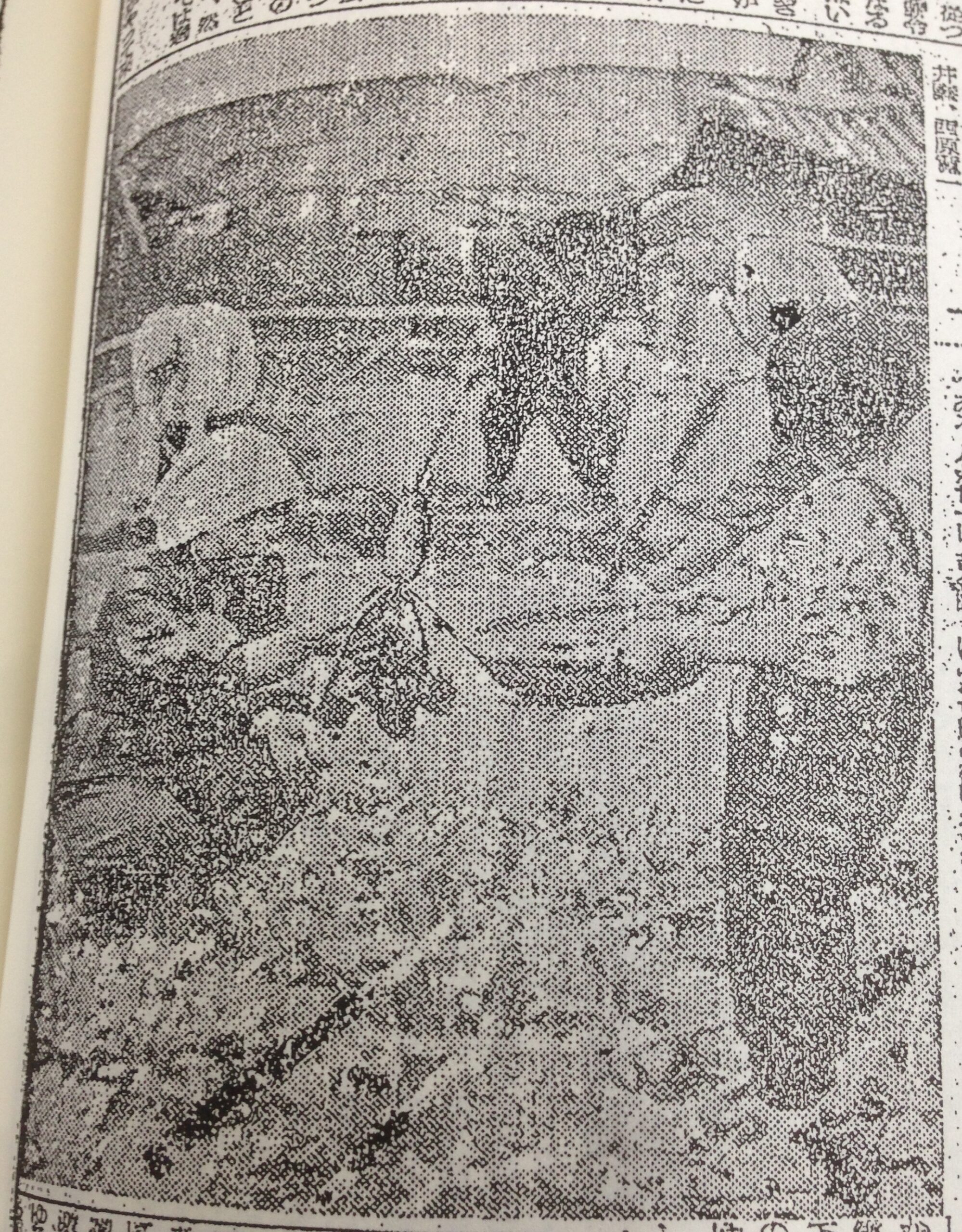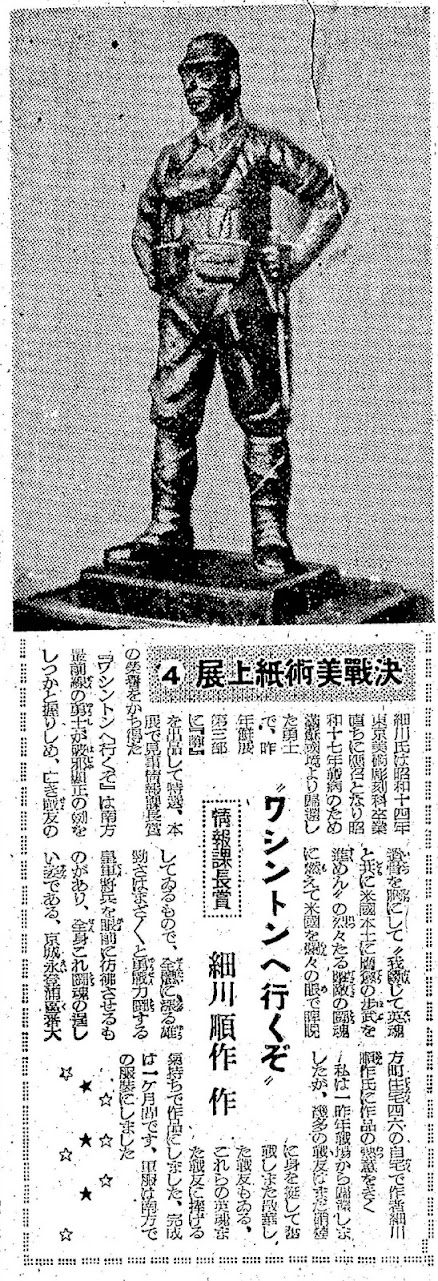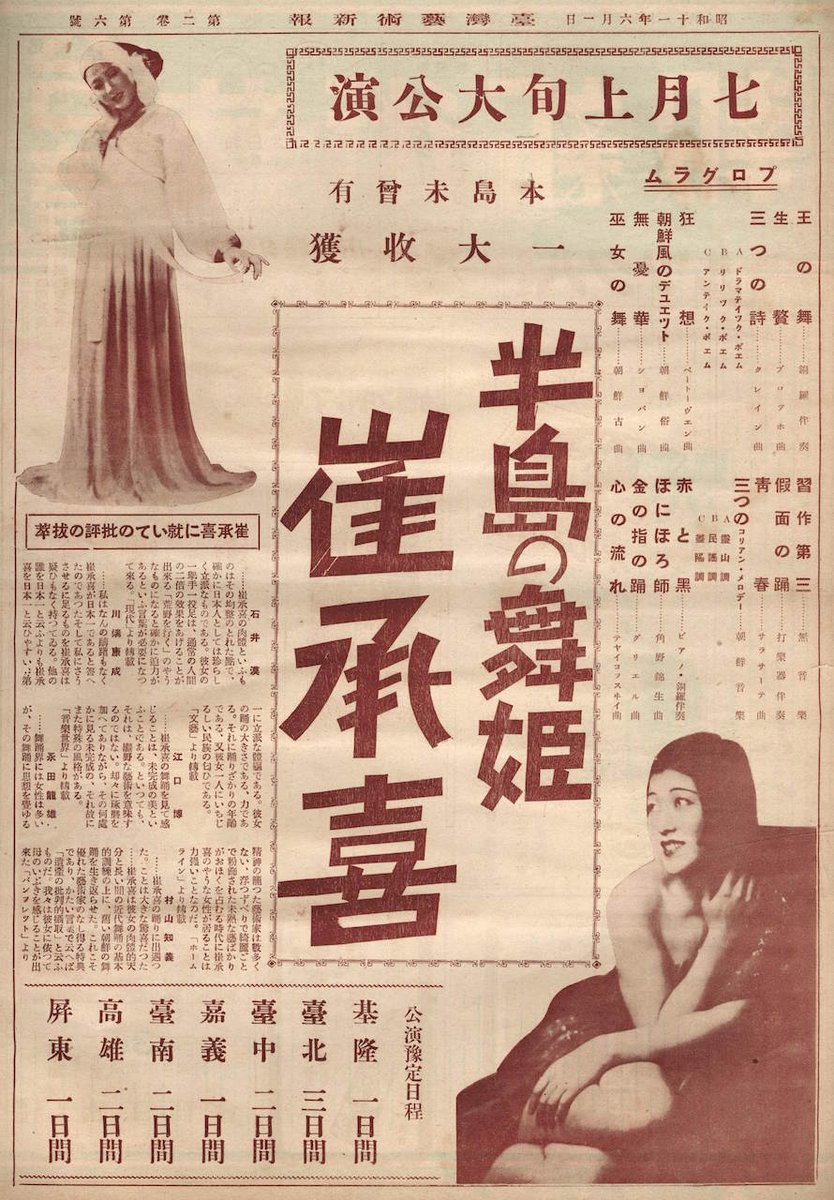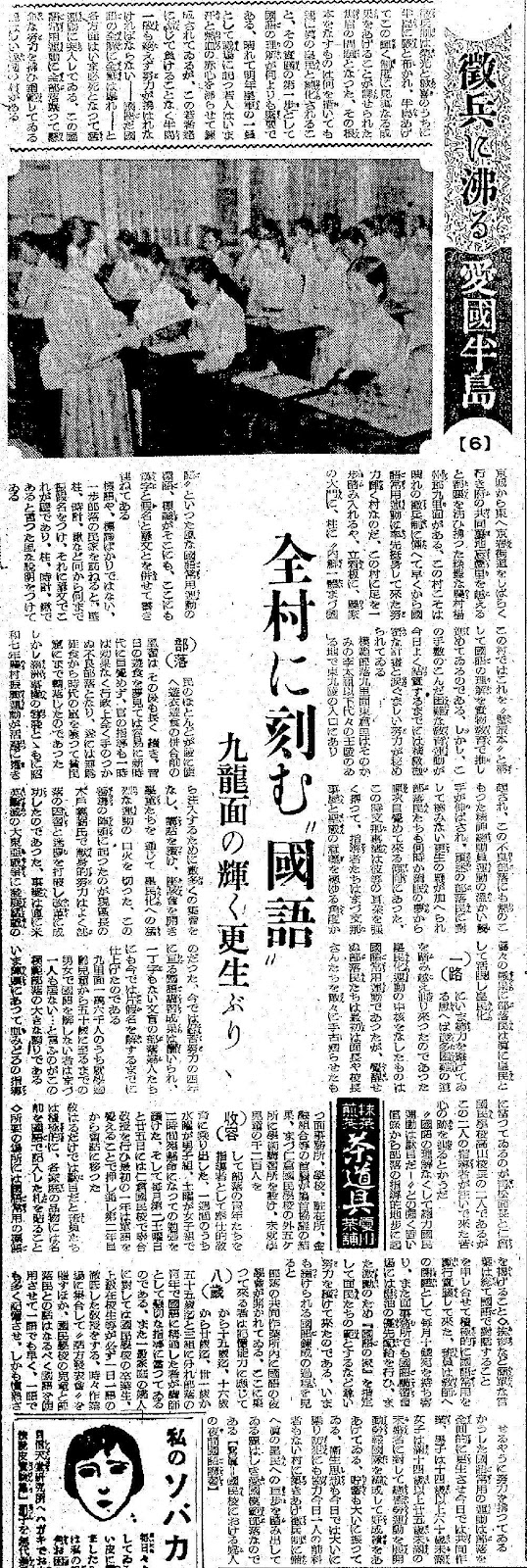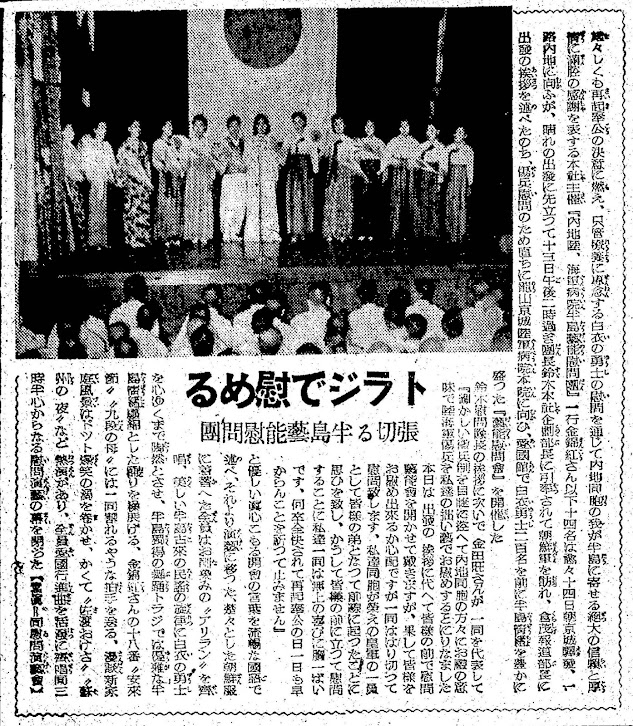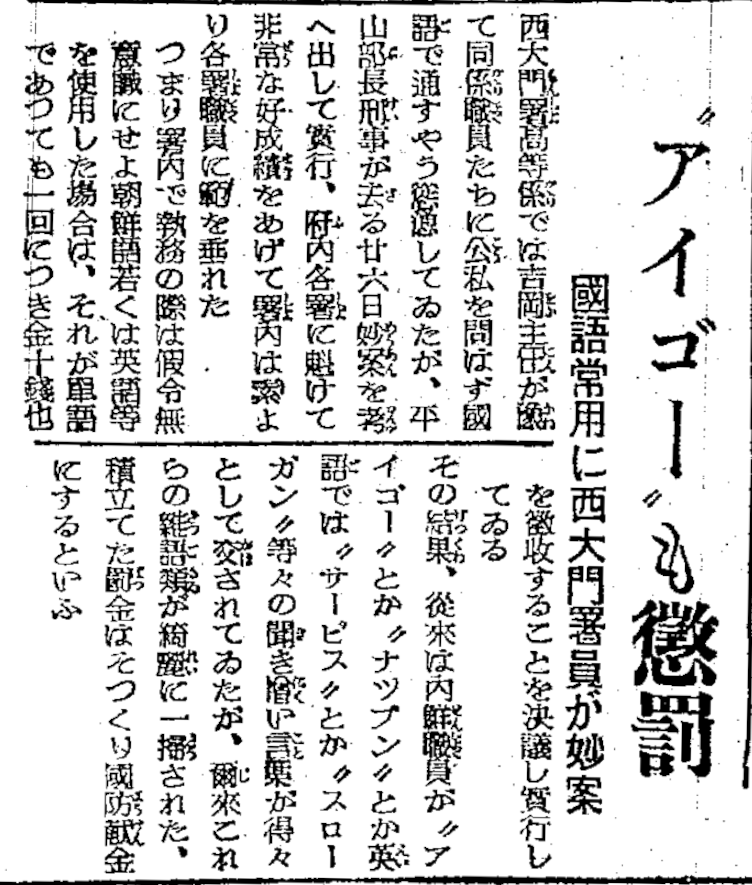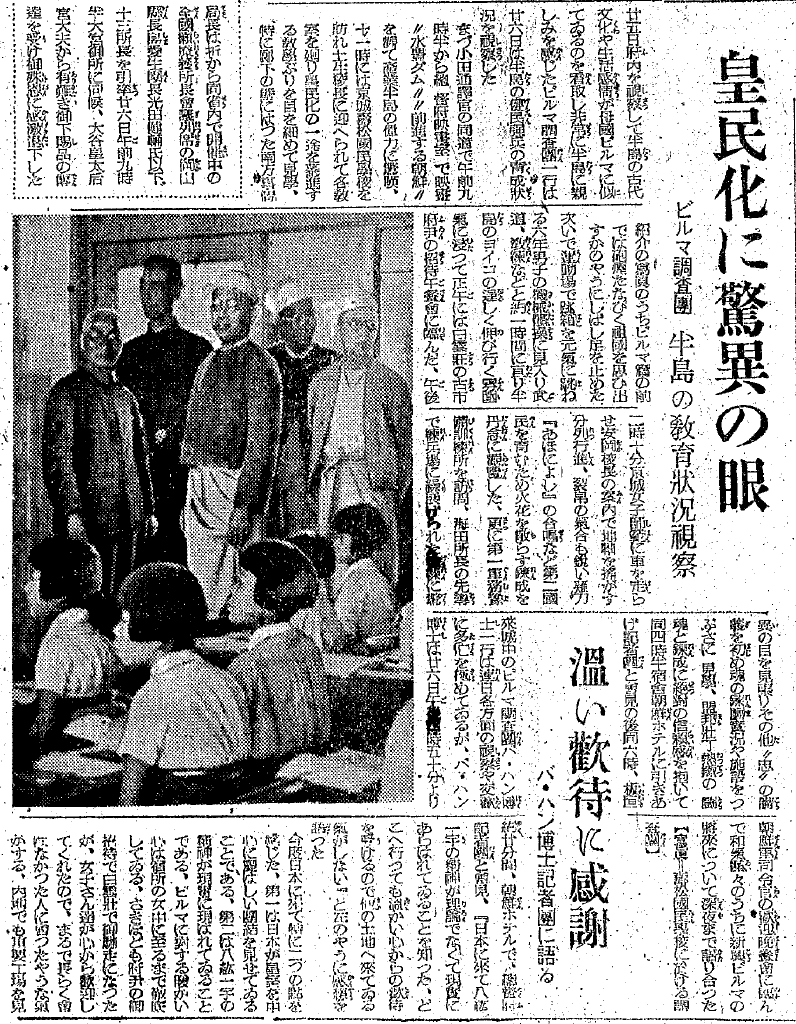
In June 1944, the Japanese military gave a Burmese delegation a VIP tour of Seoul, including the local schools Japanizing Korean children (photo: Susong School in Jongno-gu, Seoul)
In June 1944, the Japanese military gave their Burmese visitors a VIP tour of Seoul, including the local schools that were Japanizing Korean children. But I doubt that the Susong School in this photo was an internment camp for specifically Japanizing Korean girls into wives of Japanese soldiers, since there were apparently also boys at the school. But I can’t rule it out with the Seoul Women’s Normal School, which the Burmese delegation also visited.
Notes: The article pejoratively calls the Korean students 第二国民, literally “Number-two national people” or second-tier imperial subjects, where first-tier imperial subjects are the Japanese. But at the same time, the Burmese guests were also told that, in Japanese mythology, Japan and Korea were one and the same. This may refer to the mythological stories of Empress Jingu invading and conquering parts of southern Korea.
Hakko Ichiu refers to the grandiose expansionist idea that the Japanese emperor has the divine mandate to extend his “benevolent” rule over the whole world.
While the leader of the Burmese delegation, Dr. Ba Han, is a relatively obscure legal scholar, his younger brother Ba Maw is more famous and is well known as the collaborationist leader of Burma during World War II.
In 2019, a Sankei News reporter interviewed a 90 year old Korean man who actually attended Susong School. According to him, there were both Japanese and Korean teachers, the student body was roughly half Japanese and half Korean, and it was forbidden to speak Korean there.
(my translation)
June 27, 1944 Gyeongseong Ilbo (Keijo Nippo)
Eyes of Wonder at the “Imperialization” Process
Burmese Study Mission Studies Educational Conditions on the Peninsula
On the 25th, the Burmese delegation inspected Seoul and, observing the similarity of the ancient culture and lifestyle of the peninsula to those of their native Burma, felt a great affinity with the peninsula. On the 26th, they inspected the conditions under which healthy civilians and strong soldiers were fostered on the peninsula.
At 9:30 a.m., accompanied by interpreter Oda, they watched the films “Sup’ung Dam” and “Advancing Korea” in the Governor-General’s Film Room and marveled at the great power of the industrial peninsula. At 11:00, they visited Seoul Susong National School and were welcomed by Principal Habu. They toured each classroom, narrowing their eyes as they studied how the teaching and learning process of “imperialization” was moving forward. As they looked at the photos on the walls of the hallway introducing the situation in the south, they stopped in their tracks and paid special attention to the Burma section of the photos, as though they were recalling how their homeland was filled with gun smoke.
Next, they watched sixth grade boys jumping on vaulting boxes in the playground, and then spent about an hour watching them do martial arts and drills, immersing themselves in the atmosphere of the growing strength of the children on the peninsula. At noon, they attended an invitational lunch party with Provincial General Furuichi at the White Cloud Villa. At 2:10 p.m., they were driven to Seoul Women’s Normal School, where Principal Yasuoka guided them on a tour, and they carefully observed the Army Separation March that shook the earth’s axis, the sharp Naginata blade that could cut fissures, and the chorus singing the song “Aoniyoshi”, all training activities meant to spark fireworks in educating the second-tier subjects. In addition, they visited the First Military Reserve Training Center, where they were amazed at the training sessions led by Director Kaita. Starting with the “Loyalty” lecture, they exhaustively studied the actual polishing of the fighting spirit of the soldiers as well as the facilities. Embracing absolute confidence in their allies, who were the young men polishing their fighting spirit forged in molten metal, at 4:30 p.m., they returned to the Korea hotel, where they met with reporters, and at 6:00 p.m., they were given a welcome dinner by Commander Itagaki of the Korea Army, at which they congenially discussed the future of emerging Burma until late at night. Photo: The Burmese study mission at Susong National School
Gratitude for Warm Hospitality
Dr. Ba Han talks to reporters
Dr. Ba Han and his Burmese delegation have been extremely busy with their daily visits to various places and socializing. Dr. Ba Han met with the reporters from the Government-General of Korea at the Korea Hotel for about 20 minutes starting at 4:50 p.m. “Everywhere I went, I received such warm and heartfelt hospitality that I didn’t feel like I was in a foreign land”, he said and continued as follows.
“Coming to Japan this time, I felt two things in particular. The first was the beautiful unity of Japan centered on the Imperial Family. The second was that the spirit of Hakko Ichiu is manifested in reality here. The feeling of warmth towards the Burmese people was evident even among the maids at the lodgings. I was invited by the Provincial General to have dinner at the White Cloud Villa, and the girls welcomed me with such warm hearts that I felt as if I had met someone that I had not seen for a long time. We were also shown important factories in Japan proper. I was amazed at the progress in Japanese technology that I had heard about before. I was told that all the manufacturing tools can be made in Japan. There are also machines that are being built based on patents that have been transferred from countries like Germany. I am not an expert in the field of agriculture, so I don’t know much about it, but there were two things that struck me yesterday when I was shown the Suwon Agricultural Experiment Station. One is that Burma does not have enough scientific fertilizers as you do here. But in Japan proper and Korea, they make their own fertilizers. Burma does not yet use compost fertilizer, so I would like to study this when I return. The second thing is the culvert drainage pipe facilities. There is a lot of bamboo in Burma, so I am thinking of using these instead of clay pipes. As for the situation in Korea, His Excellency the Governor-General told me that according to Japanese mythology, Japan and Korea used to be one and the same, and I was very happy to see that the peoples of Korea and Japan today are truly living as one in every respect.
Source: https://archive.org/details/kjnp-1944-06-27
(my transcription into modern Japanese orthography, with punctuation marks added or modified for clarity)
昭和十九年六月二十七日 京城日報
皇民化に驚異の眼
ビルマ調査団 半島の教育状況視察
廿五日府内を視察して半島の古代文化や生活感情が母国ビルマに似ているのを看取し非常に親しみを感じたビルマ調査団一行は、廿六日は半島の健民強兵の育成状況を視察した。
まず小田通訳官の同道で午前九時半から総督府映画室で映画”水豊ダム”、”前進する朝鮮”を観て産業半島の偉力に驚嘆、十一時には京城寿松国民学校を訪れ土生校長に迎えられて各教室を廻り、皇民化の一途を邁進する教学ぶりを目を細めて見学、特に廊下の壁にはった南方事情紹介の写真のうち、ビルマ篇の前では砲煙たなびく祖国を思い出すかのように、しばし足を止めた。
次いで運動場で跳箱を元気に跳ねる六年男子の機械体操に見入り武道、教練などと約一時間に亘り、半島のヨイコの逞しく伸び行く雰囲気に浸って、正午には白雲荘の古市府尹の招待午餐会に臨んだ。午後二時十分京城女子師範に車を走らせ、安岡校長の案内で地軸を揺らがす分列行進、裂帛の気合も鋭い薙刀、「あおによし」の合唱など第二国民を育むため花火を散らす錬成を丹念に観覧した。更に第一軍務予備訓練所を訪問、海田所長の先導で練兵場に繰り展られた教練に驚異の目を見張り、その他”忠”の講義を初め魂の練磨実況や施設をつぶさに見学、盟邦壮丁熱鉄の闘魂と錬成に絶対の信頼感を抱いて同四時半宿舎朝鮮ホテルに引きあげ、記者団と会見の後同六時、板垣朝鮮軍司令官の歓迎晩餐会に臨んで和気藹々のうちに新興ビルマの将来について深夜まで語り合った。【写真=寿松国民学校に於ける調査団】
温かい歓待に感謝
バ・ハン博士記者団に語る
来城中のビルマ調査団バ・ハン博士一行は連日各方面の視察や交歓に多忙を極めているが、バ・ハン博士は廿六日午後四時五十分より約廿分間、朝鮮ホテルで、総督府記者団と会見、「日本に来て八紘一宇の精神が理論でなくて現実にあらわれていることを知った。どこへ行っても温かい心からの歓待を受けるので疆の土地へ来ている気がしない」と左のように感想を語った。
今度日本に来て特に二つの点を感じた。第一は日本が皇室を中心に麗しい団結を見せていることである。第二は八紘一宇の精神が現実に現れていることである。ビルマに対する暖かい心は宿所の女中に至るまで徹底している。さきほども府尹の御招待で白雲荘で御馳走になったが、女子さん達が心から歓迎してくれたので、まるで長らく会えなかった人に会ったような気がする。内地でも重要工場を見せて頂いた。予て聞いていた日本の技術の進歩しているのに驚いた。製作工具なども全部日本で出来るそうだ。ドイツのような国から特許の譲渡をたのみに来るような機械も出来ている。農業方面は専門家でないからよくわからないが、昨日水原の農業試験場を見せて頂いて感じたことが二つある。一つはビルマでも御当地と同様に科学肥料が十分でない。しかし内地でも朝鮮でも自給肥料でこれを補っている。ビルマはまだ堆肥を使っていないので今度帰ったら之を研究したい。次は暗渠排水の施設である。ビルマには竹が沢山あるから土管の代わりにこれを利用して出来ないものかと考えている。朝鮮の事情については総督閣下から日本の神話によると昔は日本も朝鮮も同じであったということをうかがったが、今日すべての点で内鮮の人達が本当に一体になって生活しているのを見て非常にうれしく思った。
